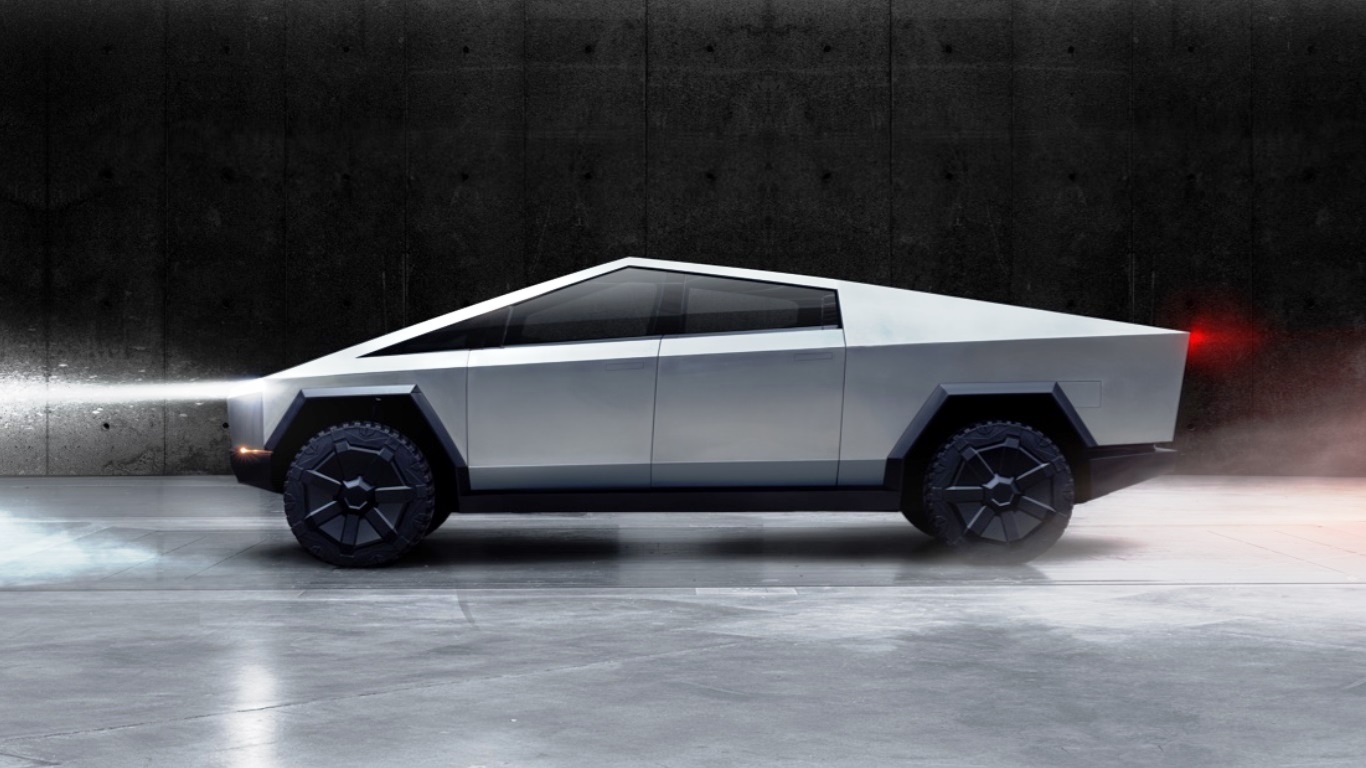Cars and Drivers
Tesla Cybertruck Launch Party Breaks Some Glass

Published:
Last Updated:

One reason product introductions from Tesla Inc. (NASDAQ: TSLA) get so much attention is that no one, even Tesla CEO Elon Musk, knows what’s going to happen. Thursday night’s unveiling of the company’s Cybertruck is just another example.
First, a few facts. The Blade Runner-styled Cybertruck is expected to go into production in 2021, with first deliveries set for late that year. A refundable $100 deposit right now will reserve either a one-motor, rear-wheel-drive version that has a list price of $39,900; a dual-motor, all-wheel-drive model is priced at $49,900; and a tri-motor, all-wheel-drive model will set you back $69,900. The only option currently on the reservation website is the $7,000 self-driving package.
Pricing could be the big news here. The base-price for a Cybertruck is about $10,000 below the most often seen estimate. It is nearly $30,000 below the entry-level Rivian R1T. The tri-motor Cybertruck powertrain, however, is more comparable to the base-level R1T, while the high-end Tesla’s estimated range of 500 miles is comparable to the high-end R1T’s estimated range of 400+ miles.
The average transaction price for a new light vehicle (car, pickup, sport utility vehicle) in October was $38,259, according to Cox Automotive. Ford, GM and Fiat Chrysler all get at least $5,000 more per pickup, and a $10,000 premium is not uncommon. The sky’s the limit, really.
Fredric Lambert at Electrek notes that the base-level Cybertrack battery pack will provide 100 kWh of energy and is roughly equal to the battery pack in Tesla’s Model S Long Range model costing $80,000. That indicates, Lambert says, dramatic improvements in battery power and manufacturing costs. Lambert also reveals that he is long Tesla.
The Cybertruck unveiling did not follow the script that Tesla had mapped out. Musk has claimed that the truck’s stainless steel body (reminiscent of the long-departed DeLorean) can withstand 9mm bullets and when chief designer Franz von Holzhausen took a sledgehammer to the truck’s side panel, nary a dent was visible. When von Holzhausen threw a metal ball at one of the truck’s “armor glass” windows, however, the glass shattered, causing Musk to spit out an expletive. A second throw at a different window had the same result.
Over at research and investment firm Loup Ventures, analyst Gene Munster writes that while the broken glass demonstration will get the most attention, the real story is different:
The episode captures an important piece of Tesla’s culture: a willingness to take risks in order to change the status quo — and consistently falling short on preparation.
In other words, the Tesla playbook has always been to overpromise and underdeliver.
Tesla investors should have no problem understanding what Munster means. He also points out that the “Cybertruck misses the sweet spot of the truck market, which accounts for 18% of cars sold in the US and 6% globally.” About 17 million new vehicles were sold in the United States last year, and about 90 million were sold globally. By 2023, Munster notes, he believes Cybertruck could account for 5% (30,000 units) of all Tesla vehicle deliveries.
Investors are not amused. Friday morning, Tesla shares traded down about 3.5% in the premarket, at $342.40 in a 52-week range of $176.99 to $379.49. The consensus 12-month price target is $263.97.
Thank you for reading! Have some feedback for us?
Contact the 24/7 Wall St. editorial team.